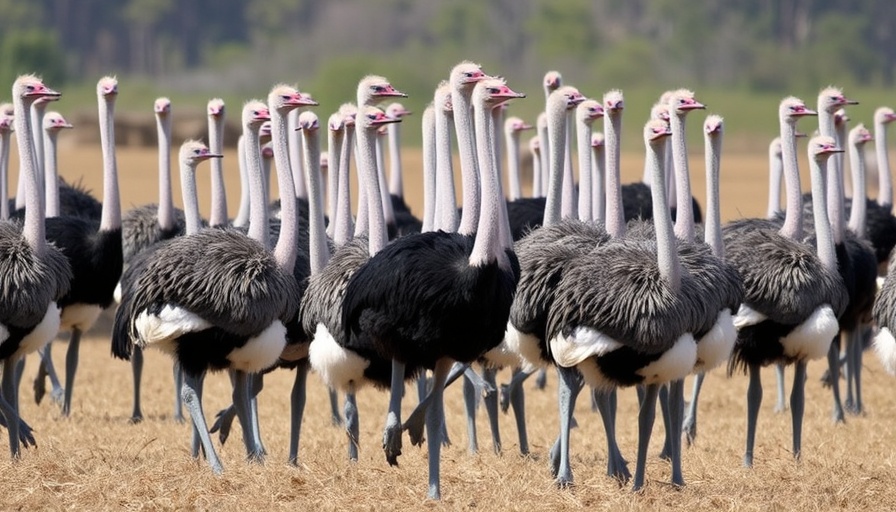
Understanding the Real Threat of H5N1 Beyond the Ostrich Cull
The recent decision by the Canadian Food Inspection Agency (CFIA) to cull over 400 ostriches from Universal Ostrich Farms exemplifies the ongoing struggle between animal welfare and public health. Though this action was taken in response to H5N1 avian flu concerns, it raises crucial questions about the actual sources of the virus and whether the culling is a thoughtful approach to controlling the outbreak.
Activism and Public Outcry: The Fight for the Ostriches
The culling order has sparked fierce protests from animal rights activists and prominent figures, including U.S. health officials, drawing significant media attention. Activists argue that these ostriches are victims rather than vectors of the virus, with evidence suggesting that the birds may have developed immunity. Supporters have rallied behind the farm, emphasizing their unique research on ostrich antibodies, which could provide insights into combating the flu without resorting to drastic measures such as culling.
The Court's Ruling: A Temporary Breather for the Birds
Fortunately for the ostriches at Universal Ostrich Farms, Canada’s Supreme Court recently granted an interim stay of the culling order, allowing for more thorough investigation into the health status of the remaining birds. This ruling acknowledges the complexity of the situation where public health, animal rights, and scientific inquiry intersect. As Dr. Andrew Fenton, a bioethicist from Dalhousie University, remarked, the demand for trust in public health agencies is critical, especially when public perception turns against them.
H5N1 and Its Urgency: What You Need to Know
The H5N1 virus is a strain of avian influenza known for its severe impact on poultry as well as its potential to infect humans. The recent outbreaks have led to significant culling decisions across many nations, not just Canada. However, many experts emphasize that culling in itself does not address the root causes of the outbreaks. Potential sources, such as wild avian populations and farming practices, need to be thoroughly examined to develop more effective control measures.
The conflict surrounding the ostrich culling order underscores the intertwined roles of community activism and scientific investigation in public health strategies. With inflammatory rhetoric gaining traction—often mirroring the anti-vaccine sentiment observed during the recent pandemic—the necessity for clear, science-backed dialogue has never been more urgent. Public perceptions can either empower or undermine health initiatives, making robust communication critical.
Moving Forward: A Call for Balanced Approaches
The standoff over the ostrich culling reflects larger societal tensions regarding scientific authority and public health measures. Encouraging open dialogue that embraces both animal welfare and public health perspectives is essential. Collaborative efforts between government agencies, the farming community, and bioethicists can pave the way for innovative solutions addressing H5N1 while preserving the welfare of the animals involved.
Conclusion: Rethinking Our Approach to Animal Health and Public Safety
The ostrich farm standoff emphasizes the importance of viewing animals as part of a complex ecosystem in which health threats like H5N1 emerge. An integrated strategy that considers the health of both poultry and wildlife, alongside human health outcomes, will yield better long-term results than a reactionary cull policy. It’s imperative for policymakers to balance public health safety with compassion towards animal welfare, creating a more sustainable future for all stakeholders.
Advocacy for responsible scientific inquiry and animal welfare is vital to safeguard community trust in health agencies. Understanding the interconnectedness of these fields will ultimately enhance our ability to manage emerging zoonotic diseases effectively.
 Add Row
Add Row  Add
Add 



Write A Comment